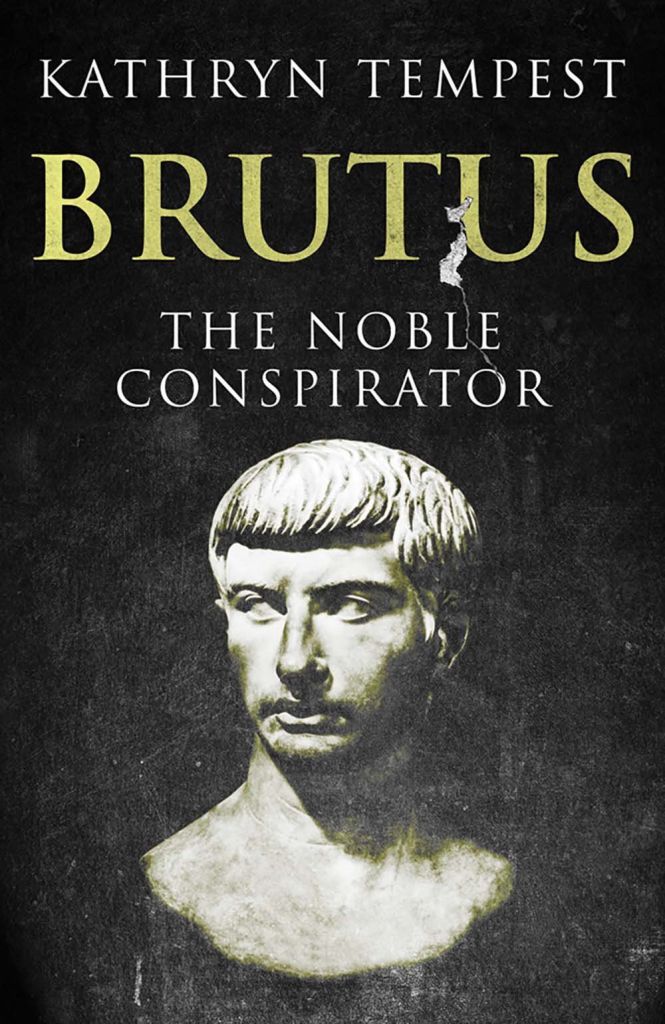Book review: ‘Brutus’
Published 12:00 am Sunday, January 14, 2018

- Book review: 'Brutus'
“Brutus: The Noble Conspirator” by Kathryn Tempest. New Haven and London: Yale University Press, 2017. 336 pages, $28.50 (hardbound).
In William Shakespeare’s tragedy “Julius Caesar,” the playwright has Mark Antony say of Brutus: “This was the noblest Roman of them all. … His life was gentle, and the elements so mixed in him that nature might stand up and say to the world, ‘This was a man!’ ” In Kathryn Tempest’s recent study, she explores conflicting interpretations of Brutus’ life and career and how these reflect the variety of historical sources available.
In her preface, she explains: “To a considerable extent this book will examine how Brutus’ life has been recorded and transmitted from antiquity to today; a central contention is that, to appreciate Brutus the man, we must really probe the sources we use, to understand who is speaking and why … it will offer a sense of who Brutus was and why he acted in the way he did, while simultaneously digging far deeper into the presentation of Brutus in the ancient evidence than has hitherto been attempted. As far as possible, then, it places his decisions and actions back into their real time, and it always prioritizes an evaluation of the contemporary over later evidence for studying them. Wherever the evidence allows, Brutus is made to speak, argue and justify himself in his own words.”
Brutus’ “inherited nobility” included ancestral ties, at least in name, to the Lucius Junius Brutus who had overthrown the Tarquin monarchy in 509 B.C. and helped establish the Republic, and to Servilius Ahala, who had killed Spurius Maelius in 439 B.C. for attempting to establish a tyranny in Rome. His uncle, the arch-conservative Cato the Younger, was also a symbolic influence on the young man. Brutus honored the first two on coins, thus proclaiming his devotion to protecting liberty and opposing tyranny. Although he eulogized Cato, he did not approve of his uncle’s suicide after his defeat by Caesar in North Africa, even though Brutus would ultimately follow Cato’s example by taking his own life after the defeat at Philippi. Brutus’ mother, Servilia, was the dictator’s mistress and Caesar clearly advanced Brutus’ career at several stages and protected and pardoned him after the defeat at Pharsalus.
Brutus is often portrayed as the idealist among Caesar’s assassins and he may have been influential in the decision to target only the dictator and not his associates such as Marc Antony and Lepidus. On the one hand, Brutus could logically join the conspiracy because he saw Caesar as establishing a tyranny in Rome as “dictator for life,” but Brutus had accepted clemency and promotion from Caesar as his patron and some would view his act as a betrayal. Brutus himself displayed clemency in protecting (briefly) Gaius Antonius and trying to shield his sister Junia’s (and Lepidus’) children, despite Cicero’s objections, but, as Tempest points out, he also waged a bitter campaign in the Greek east, offering Thessalonica and Sparta for his soldiers to plunder and killing the prisoners in his camp. The author ultimately concludes that Brutus was an enigma even to those who knew him. Her careful analysis of letters and other historical sources is excellent.
There are a few minor problems. For example, Brutus’ sister Junia is omitted from the index and Tempest refers (p. 230) to the reigns of Trajan and Hadrian, citing their dates of rule, but then in the following sentence refers to Marcus Aurelius’ period citing his birth year instead of the first year of his reign. She also quotes the poet Dante, who, for his betrayal of Caesar, placed Brutus along with Cassius and Judas in the lowest circle of hell being chewed on eternally by Lucifer, but gives 1261 as his birth year instead of the standard 1265. When she comments on Julius Caesar’s image appearing on Roman coins, she correctly states that the image of a living man had not been used before, but omits discussion of the fact that obverse images up to this point were normally of gods so Caesar was placing himself where only gods (or dead heroes) had been placed before. She does quite correctly point out the irony, however, of Brutus soon afterward using his own image on coins while simultaneously championing the struggle against tyranny. His coin proclaiming the Ides of March depicting two daggers and the cap of liberty is particularly striking. One also wonders if the assassination was worth all of the carnage it caused and if restoring the free Republic was ever a real possibility.
The author includes several plates, including one of Michelangelo’s unfinished portrait of Brutus, two appendices on chronology and sources, extensive endnotes, a bibliography and an index. The book is well worth reading, both by scholars and by anyone interested in the classical world.
– Reviewed by Richard Weigel, Western Kentucky University History Department.



